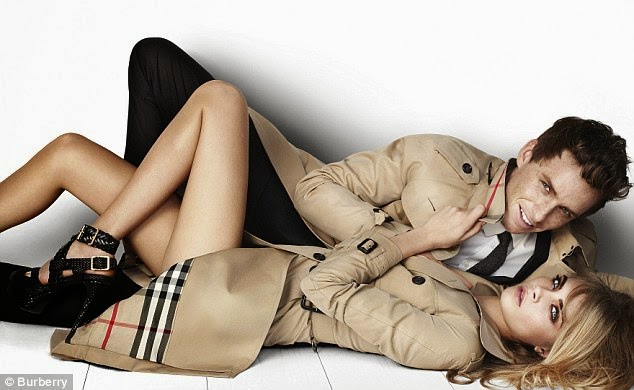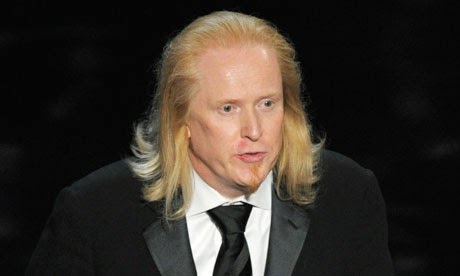Velvet or Wonder
Thursday, 30 October 2014
Highway on my plate!!
We’re baaaack!!! We’re hungryyyy!!!!! This is how host duo
Rocky and Mayur commence their food
travelogue “Highway on my plate”. It is a weekly travel and food show that airs
on the channel NDTV Good Times since 2007.
 |
| Mayur (L) and Rocky (R) at their job |
 |
| Fair report |
The
show follows a regular format where the hosts travel to different food joints
and eateries across the different states of India, mainly through the National
Highways of India. It has majorly been shot outdoors on the highway or on the
various streets of the different cities they travel to. It has a consistent
fast pace to the camera movement and peppy music throughout the shots. There is
sometimes a bit of a lighting glitch when there are indoor shots from a not so
well lit restaurant.
Wednesday, 29 October 2014
Fashion films will soon take over the runway!
Not only does film have the power to make actors/actresses
household names, make millions at the box office and influence a generation, it
recently has become an important and relevant way to sell clothes. Through the
influx of the internet, the fashion landscape has had to keep up with frequency
of technology. In doing so, over the last few years we have seen live-streamed
fashion shows, online shopping and now fashion film.
 |
| Dior's ad campaign film |
 |
| Add caption |
 Films allow a designer to collaborate with someone on
something that will complement their collection and give it another layer. You
can show an audience moving footage of clothing in an interesting way other
than on a catwalk, and via the internet where it will be seen by a lot of
people on an international level.
Films allow a designer to collaborate with someone on
something that will complement their collection and give it another layer. You
can show an audience moving footage of clothing in an interesting way other
than on a catwalk, and via the internet where it will be seen by a lot of
people on an international level.
With a still image you cannot see the life in a garment, the
way it moves, but with a runway presentation, there’s always room for disaster.
Film is as controlled as a photograph, but you can still see the motion that
naturally exists in clothes.
The Internet and the fashion film are entwining to create
cheaper means of reaching access-hungry audiences on a larger scale. With
networking company Cisco predicting video-watchers to surpass 57% of all online
usage by 2014, its clear the way forward for designers is to use film and the
web to make a connection with consumers.
 |
| Brands will soon showcase only via short films |
The Shining: Title design
Movie- The
Shinning
This stands out as one of the best title sequences ever ,not
to say in particular for the horror/thriller genre. It is a hand-lettered
title.
It's a deceptively simple and economic approach (like a lot
of Kubrick title sequences) that, in a few minutes, proves to be the perfect
setup for the film.
There is a high contrast between the complimenting elements
of cinematography and sound. This was done to perhaps create the suspense.
"The flyover sequence, combined with Wendy Carlos’
haunting synth score, hammers home the isolation of the characters within the
vastness of the landscape. Whilst you're following the tiny car in an almost
sublime landscape, the hints of Indian chanting add to the overall dreadful
eeriness of the titles, enhanced by the cold credit sequence which rolls in
reverse over the screen. You're almost relieved when you finally arrive at the
Overlook Hotel - but then you still have to discover room 237."
Sound that silently built tension
Movie- The Hurt
Locker
The Hurt Locker is an Iraqi war thriller that revolves
around a bomb defusal squad. Its main key factor is the tension that builds
around and accelerates throughout the movie. Without its virtuoso sound
editing, the shots of the desert, the exchanges between the U.S. soldiers,
their British allies, and their Iraqi enemies would lack tension and belief.
The composition of during the night scene where you can
hardly see anything on the screen: It’s the darting sound effects, the
background sounds, and the occasional human utterances that make the drama and
the movie.
Sound Designer, Paul Ottosson’ s inclination towards organic
sounds made him record most the sounds in the middle east itself. "I also
recorded guns out in the deserts here in California. Then we went to foley
stages, and we recorded a lot of the gear of the movie, and I also got the bomb
suit that they used in the movie. There's an air conditioner in the bomb suit
that the techs use. I got that down and all the sounds that it makes. And we
also recorded a lot of stuff between takes. There were animals in the area and
the winds and vehicles. So we tried to capture as much as we could -- city
life, these calls to prayer that they have very often in the Middle East and
the Muslim part of the world. There's not a whole lot of stuff we tried to fake
and get by the audience." Says Ottosson.
 |
| Paul Ottosson, Sound Designer |
Ottosson spent a year and a half as a ranking officer in the
Swedish military, and he drew on his personal experience when creating and
recording sounds for "The Hurt Locker," about a U.S. Army bomb squad
disposal unit.
To always keep the viewers on their toes they played the
foley louder than usual. These intelligently mixed sounds for “The Hurt Locker”
definitely had scarring effects.
High on montage!
Movie- Hugo
Hugo gets off to a marvelous start with a shape match cut
from the gears of a clock to the hubTrip to the Moon poster of Paris centered
around the Arc de Triomphe (which it does in reverse order later in the film).
In another poem to editing, the movie employs an automaton as a subtle Kuleshov
(montage) device. (The automaton seems asleep, sad, and determined, depending
on the shots Schoomaker surrounds it with.
The movies recounts how early moviegoers reacted to movies,
such as the famous incident where Parisians thought a train was really coming
into the station in on of the early Lumiere brothers’ shorts and reacted by
trying to leave the theatre. Hugo also shows many scenes from Melies most
famous film A Trip to the Moon, a pioneer fantasy film of special effects.
"The film is a distillation of all the work Scorsese
has done over the years, to bring other artists the world has forgotten back to
the world," Schoonmaker said. "And that’s what we’d like to get
across. How important the history of film is to see and enjoy." The editor
added.
Gravity: A critique on production design
 |
| Movie poster |
 |
| Andy Nicholson, Production designer |
One of the most complicated sequences takes place earlier in
the film when Bullock manages to make it back to the ISS, grabs handholds along
the exterior in order to reach the airlock. This required designing things for
Bullock to grab onto and pull on to show her physical exertions.
Since the public is very familiar with live broadcasts and
photos of space stations and space walks, a challenge was to make the vehicles
as accurate as possible down to the smallest details. That required extensive
research, with the trove at NASA serving as a key repository. “Without the huge
amount of NASA photography and technical data in the public domain, nothing
could have been as detailed,” Nicholson noted. Several astronauts also served
as consultants.
 |
| Team working on a set |
Subscribe to:
Comments (Atom)





